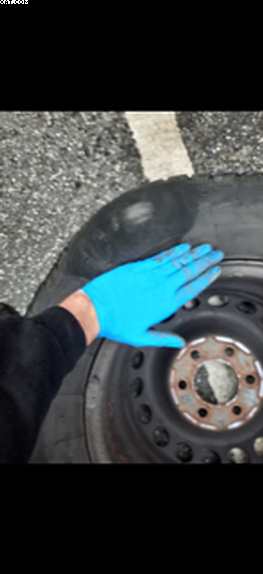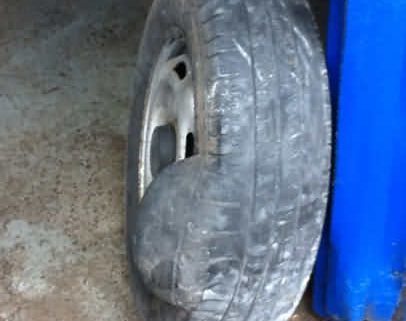Massive Tyre Bubble Tragedy Averted
Table of Contents
Massive Tyre Bubble Tragedy Averted

Massive Tyre Bubble Tragedy Averted
So this happened to the driver of a Mercedes van hurtling down the M62 motorway at 70 MPH. The driver noticed one or too vehicles flashing in his rear view mirror. However, not thinking it had anything to do with him, the guy carried on driving to his destination.
In fact, the van had developed a massive bubble on one of his rear tyres. How he couldn’t feel any bumping sensation, I will never know !
Fortunatly, the driver decided to pull onto the hard shoulder and was shocked to see the massive bubble that had developed on one of his rear tyres. After calling for a breakdown truck the van was presented to us and we fitted the guy a new tyre.

Why this can happen to your tyres
Why Do Tyres Form Perilous Bubbles?
The Principal Causes of a Possible Blowout
One of the most terrifying things that can occur while driving is an unexpected tyre blowout. As you’re driving along, taking it easy, all of a sudden there’s a huge bang and you start to lose control. This type of tyre failure is frequently caused by a seemingly minor issue, such as a bubble on the tyre sidewall. However, how could that tiny bubble turn into a large bubble, resulting in something so disastrous? This post will discuss the primary causes of tyre bubbles and how they may ultimately result in a potentially harmful blowout.
Knowing About the Tyre Bubble-Massive Tyre Bubble Tragedy Averted
Let us first define what a tyre bubble is. Though it can occasionally be detected on the tread as well, it typically manifests as a bulge on the tyre’s sidewall. This bubble arises from a breakdown in the tyre’s internal structure, which permits air to push outward and into the rubber’s outer layers. In essence, a tyre bubble is a sign of damage to the tyre’s internal layers, which are essential for maintaining everything secure and undamaged.
Typical Reasons for Tyre Bubbles
Impact Damage: The Unknown Risk of Kerbs and Potholes
Impact damage is one of the most frequent reasons for a tyre bubble. If you’ve ever driven over debris at high speed, smashed into a kerb, or struck a pothole, you know that the abrupt shock can compress the sidewall between the obstruction and the wheel rim. This may lead to the internal tyre layers breaking down, especially the fabric plies and cords that provide the tyre structure. The pressured air inside the tyre causes the rubber to bulge outwardly when these layers are compromised or punctured, producing a bubble. Even though the damage might not be apparent at first, that tiny bubble is a ticking time bomb.
Manufacturing Errors: An Uncommon Yet Serious Problem
A manufacturing flaw may occasionally be the cause of a tyre bubble, however, it is not common. The sidewall may develop weak patches if there is a problem with the tyre’s construction, such as improper layer bonding. These weak areas in the tyre may enlarge with time due to the strains of regular driving, which could ultimately result in the formation of a bubble. Even with rigorous quality inspections by manufacturers, flaws can sometimes sneak through, so it’s always a good idea to thoroughly inspect your tyres after installing new ones.
Underinflation: Tyres’ Silent Death Wish-Massive Tyre Bubble Tragedy Averted
More pressure is placed on the sidewalls when driving on underinflated tyres. A tyre that is underinflated will bend and stretch more than it should because more of the sidewall will be in touch with the road. This ongoing tension may weaken the tyre’s internal structure, which could lead to the formation of bubbles. Moreover, underinflated tyres have a tendency to heat up faster.
- Nissan Qashqai Starter Replacement
- Millions of car workers
- All-Season tyres versus winter tyres
- Top Class Car for MOT Test
- BMW Mini Wheel bearing-Or just tyre noise?


